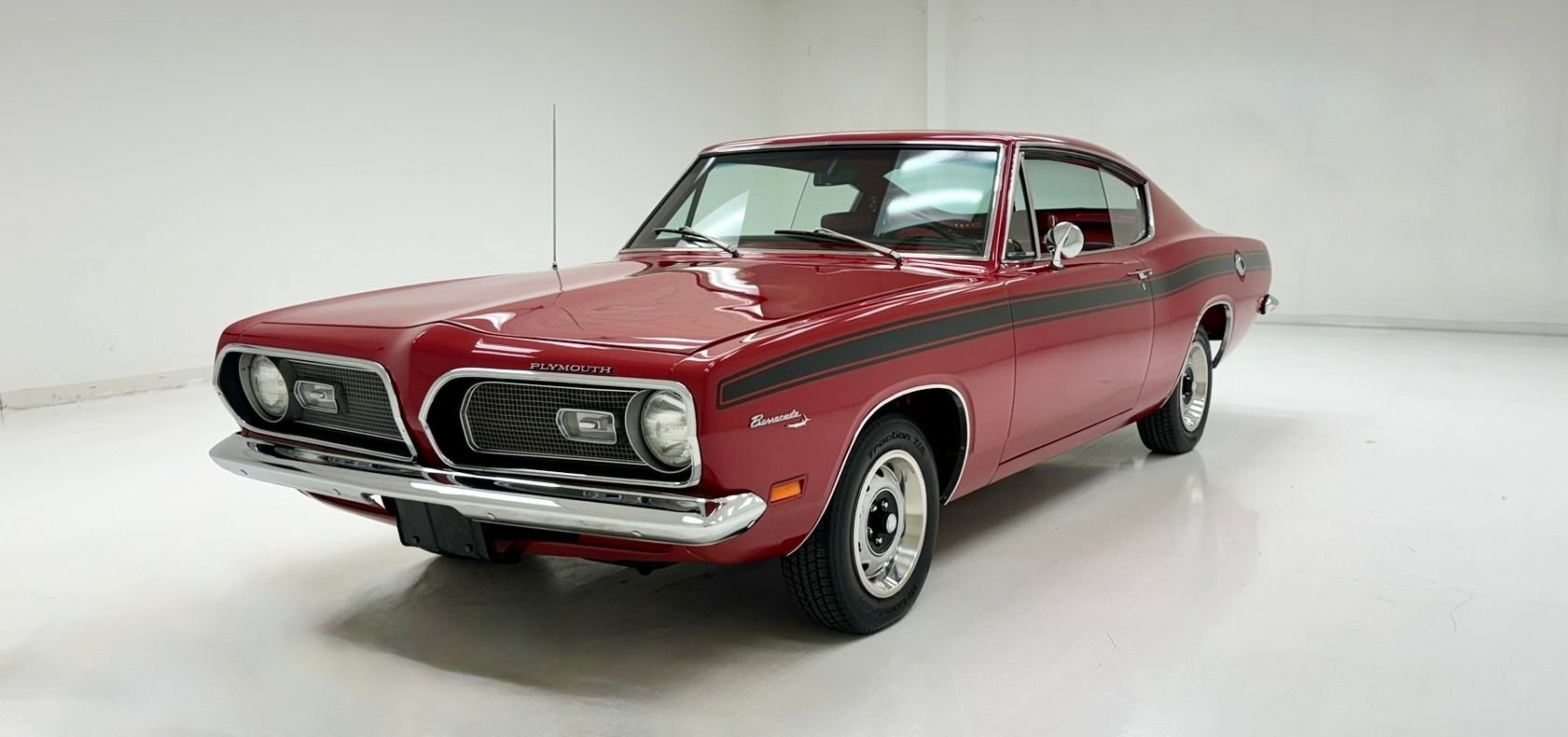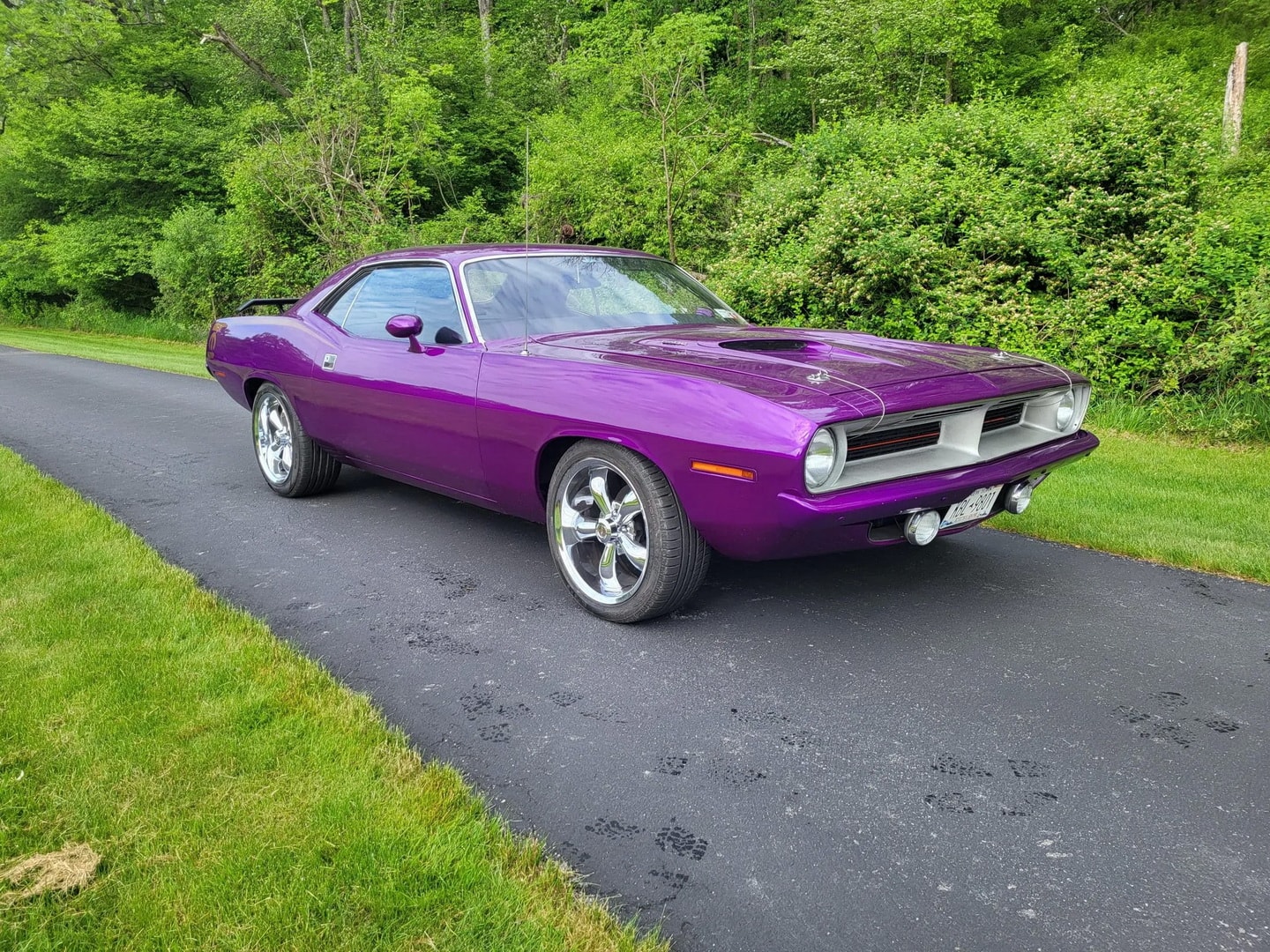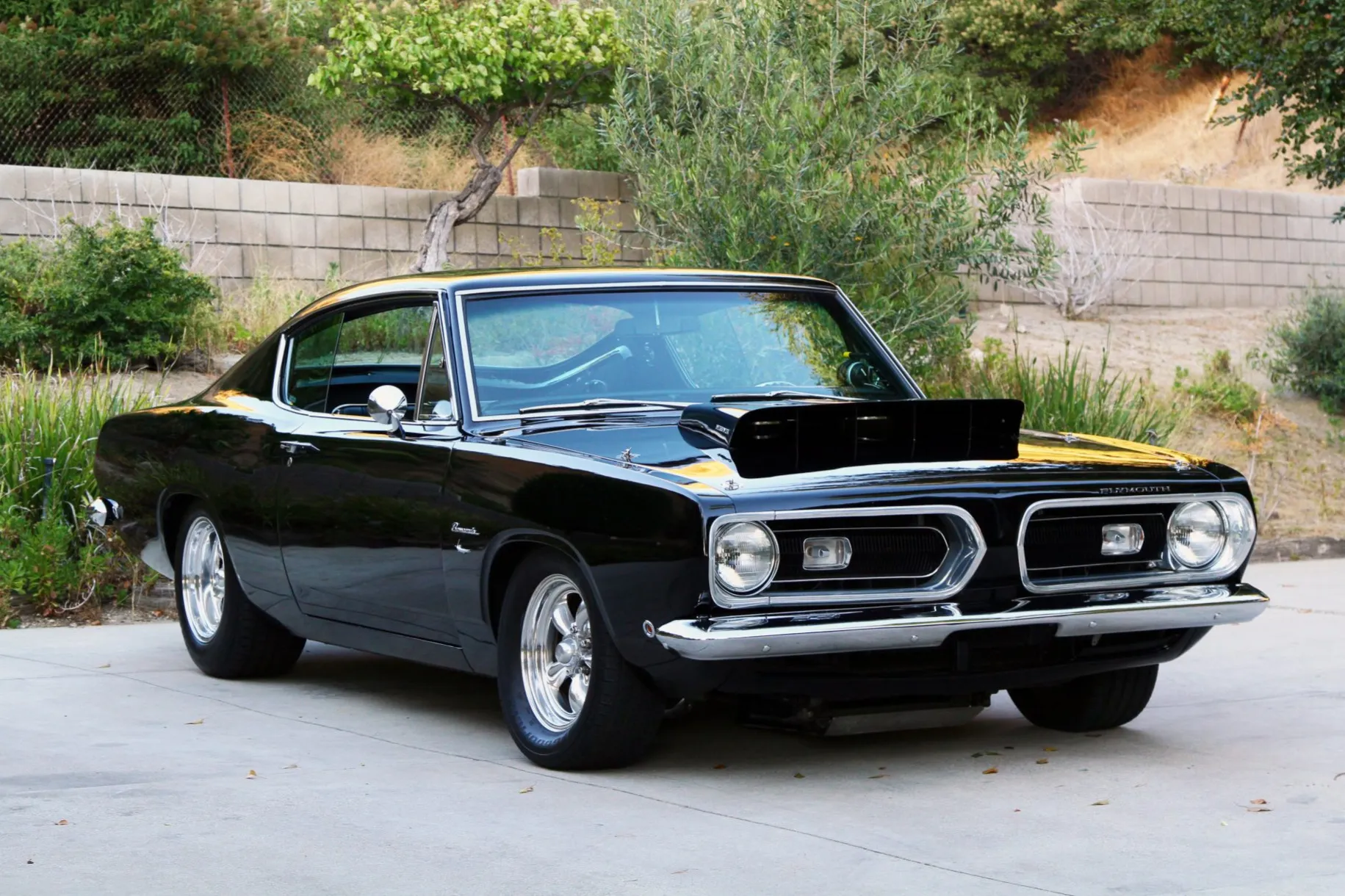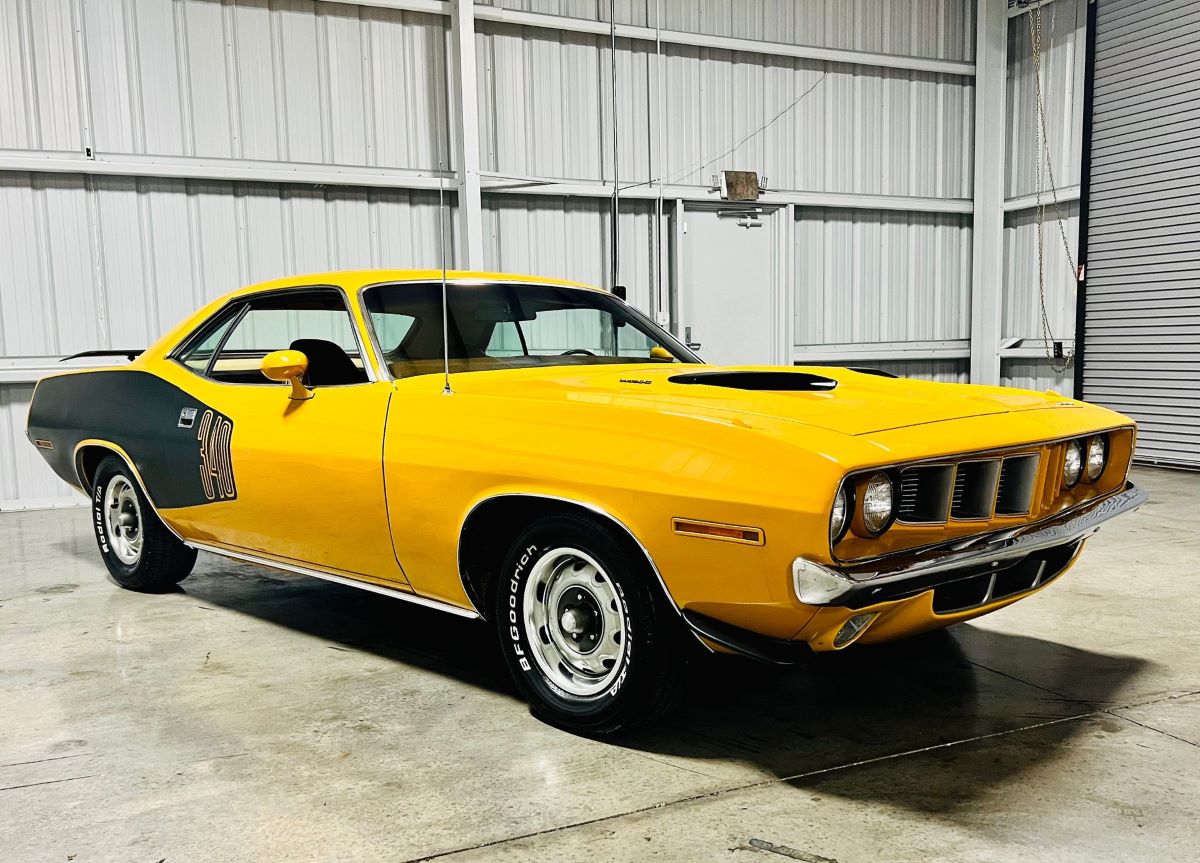When it comes to muscle cars, the United States has produced some of the most iconic and powerful vehicles in automotive history, with brands like Ford, Chevrolet, and Dodge creating legends that continue to evoke passion among car enthusiasts.
These muscle cars are known for their big engines, aggressive styling, and performance that delivers a thrilling driving experience.
However, amid the massive, gas-guzzling V8 engines and bold designs, there was one small car that dared to challenge the status quo, combining muscle car DNA with compact design and performance that was both accessible and exciting.
The car in question is the Plymouth Barracuda, often regarded as one of the smallest muscle cars to ever grace the American automotive landscape. Produced by Chrysler from the mid-1960s to the early 1970s, the Barracuda’s rise to fame and subsequent decline mark a fascinating chapter in the history of American performance cars.
Though overshadowed by larger muscle car giants like the Ford Mustang and Chevrolet Camaro, the Barracuda still holds a special place in the hearts of collectors and enthusiasts.
This article will dive into the history of the Plymouth Barracuda, its evolution from a compact car to a bona fide muscle car, its unfortunate demise, and its place in the pantheon of American performance cars.

The Birth of the Plymouth Barracuda
In the early 1960s, American car manufacturers were searching for ways to capitalize on the burgeoning demand for affordable, stylish, and performance-oriented cars, especially among the younger demographic.
The success of the Ford Mustang, which debuted in 1964, prompted many companies to jump into the pony car market, hoping to replicate its massive success. Plymouth, a brand under Chrysler, saw an opportunity to create a car that could combine sporty performance with a smaller, more economical platform.
The result was the Plymouth Barracuda, introduced in 1964. It was technically not the first muscle car in terms of sheer power or engine size, but it became one of the first compact performance cars in America. The Barracuda was built on the Chrysler Valiant platform, which made it more compact than the typical muscle cars of the era.
However, Plymouth wasn’t content with just a small car. It quickly became clear that the Barracuda was meant to be more than just another compact vehicle—it was meant to compete directly with the Mustang, but with an emphasis on performance and value.
While it wasn’t initially marketed as a “muscle car,” the Barracuda offered the option for powerful engines that gave it muscle car credentials. The car was available in various configurations, including a slant-six engine and the more powerful V8 engines that would make the Barracuda an exciting option for performance-hungry buyers.
With its distinctive fastback styling and aggressive look, the Barracuda stood out in a crowded market. Its unique rear window, which wrapped around the back of the car, became one of the most iconic features of the original Barracuda.

The Muscle Car Evolution: 1967–1970
The first generation of the Plymouth Barracuda (1964–1966) may have been a strong start, but it wasn’t until the 1967 model year that the Barracuda truly began to embrace its muscle car roots.
Plymouth redesigned the Barracuda for 1967, giving it a larger body and more performance options. This was the car that was aimed squarely at the growing muscle car market, and Plymouth wasn’t going to hold back.
One of the most important upgrades to the 1967 Barracuda was the introduction of the ‘Cuda package, which transformed the car into a true muscle car. It was available with a variety of powerful V8 engine options, including the 273 cubic-inch V8, 383 cubic-inch V8, and the iconic 426 HEMI V8—the engine that defined muscle cars during that era.
With the 426 HEMI V8, the Barracuda could produce over 400 horsepower, making it a true contender against the likes of the Mustang GT, Chevrolet Camaro SS, and the Pontiac Firebird.
The 1967 Barracuda was also significantly more stylish than its predecessor, with a more aggressive, muscular appearance that made it look like it was ready for action. The car’s design was a clear indication that Plymouth wanted to compete in the muscle car market, even though it was still smaller and lighter than many of its rivals.
The ‘Cuda trim level became synonymous with high performance, and its inclusion of the HEMI engine solidified the Barracuda’s place among the muscle car elite.
For the next few years, Plymouth continued to push the boundaries of performance. The 1970 Plymouth Barracuda was arguably the pinnacle of the car’s muscle car evolution. With its wide body, bold styling, and aggressive stance, the 1970 Barracuda offered a range of engine options that would rival the best muscle cars of the era.
The 440 cubic-inch V8 and the 426 HEMI were still available, making the Barracuda one of the most potent small cars on the market.
The 1970 model year marked the height of the Barracuda’s popularity, as it became one of the most desired muscle cars among enthusiasts. But despite its success, changes in the automotive market and the onset of rising fuel prices were about to affect the future of the Barracuda.

The Decline and Disappearance of the Barracuda
By the early 1970s, the American automotive industry was facing a series of challenges that would eventually lead to the downfall of many classic muscle cars.
The oil crisis, rising insurance premiums, and stricter emissions regulations made it increasingly difficult for muscle cars to survive in the market. Additionally, the muscle car segment was starting to become overcrowded, with competition becoming more fierce than ever.
In response to these changes, Plymouth tried to adapt the Barracuda to the new landscape of the automotive industry. However, as the market shifted towards more fuel-efficient cars, the Barracuda struggled to maintain its appeal.
The final blow came in 1974, when Plymouth discontinued the Barracuda altogether. The 1974 Barracuda was the last model to roll off the production line, marking the end of an era for America’s smallest muscle car.
Despite its powerful engines and impressive performance, the Barracuda couldn’t overcome the changing tastes of the American consumer. The shift towards smaller, more fuel-efficient vehicles, combined with the growing concerns over emissions and safety standards, led to the Barracuda’s demise.
While its departure was bittersweet, it did pave the way for future models like the Plymouth Duster and the Plymouth Road Runner, which would continue to carry the muscle car legacy forward in different forms.

The Legacy of the Plymouth Barracuda
Though the Barracuda’s reign as America’s smallest muscle car was short-lived, its impact on the automotive world remains undeniable. The ‘Cuda package, especially the HEMI versions, has become one of the most coveted among collectors, with original models fetching high prices at auctions today.
The Barracuda represents a time when American automakers pushed the boundaries of design and performance, creating cars that were not only fast but also stylish and affordable for the masses.
Moreover, the Barracuda’s influence can still be felt in today’s automotive landscape. The compact muscle car formula it helped pioneer would eventually inspire smaller performance cars, even if the segment itself has never fully returned to the same prominence it had in the 1960s and 1970s.
The Barracuda stands as a symbol of American innovation and the spirit of performance cars, even if its glory days were fleeting.
In retrospect, the Plymouth Barracuda may have been the smallest muscle car, but it left a big mark on automotive history. It wasn’t just a car—it was a symbol of the era of American performance that lived fast and, ultimately, faded away, but not without making a lasting impression.
The rise and fall of the Barracuda is a reminder of how the muscle car era defined an era in American automotive history that continues to resonate with car enthusiasts around the world today.

The Plymouth Barracuda, often overshadowed by its larger, more famous muscle car counterparts, remains one of the most influential and unique vehicles in the history of American performance cars.
Though it was smaller in stature compared to the likes of the Ford Mustang and Chevrolet Camaro, the Barracuda proved that size doesn’t always dictate performance.
With its powerful V8 engine options, including the legendary 426 HEMI, and its aggressive styling, the Barracuda earned its place as a true muscle car, capable of holding its own against the best in the industry.
While the Barracuda’s production life was short-lived, its legacy endures, particularly in the hearts of car enthusiasts and collectors. The ‘Cuda trim, with its combination of bold design and raw power, became an icon of muscle car culture.
Today, original models—especially those equipped with the HEMI engine—are highly sought after and command significant attention at classic car auctions. Despite being discontinued in 1974 due to shifting market demands and rising fuel prices, the Barracuda’s contribution to the muscle car segment and to Plymouth’s legacy cannot be overstated.
The Barracuda was, in many ways, ahead of its time—a car that embraced the American spirit of performance but also offered a compact form that challenged conventional muscle car norms.
The end of the Barracuda’s run marked the closing of a chapter in American automotive history, but its influence lives on. The Barracuda helped pave the way for future muscle cars that would rise to dominance in the 1980s and beyond, and its spirit can still be felt in today’s performance-oriented vehicles.
The Plymouth Barracuda represents the golden age of muscle cars—a time when performance, style, and innovation went hand in hand. Even though it may not have enjoyed the same long-lasting fame as its larger, more powerful siblings, the Barracuda’s legacy remains secure as one of the pioneers of compact American muscle.
It was a car that dared to be different, a car that delivered thrills with every rev of its engine, and a car that continues to be remembered as one of the most iconic muscle cars of its time.

